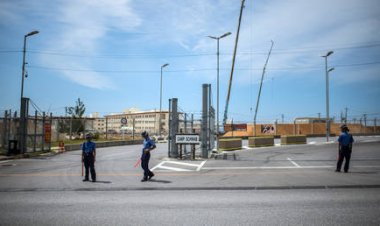Farmers in the Andes Utilize Ancient Method in Response to Climate Change
Seen from above, these immense circular formations may resemble extra-terrestrial creations, but in reality, they are an ancient farming method reapplied to battle the climate crisis on the Andean plains of Puno.

What might strike you as colossal, otherworldly circular patterns from a bird's eye view are in fact an ingenious farming technique from a bygone era, now resurrected to combat climate change on the Andean plains of Puno.
Located at the intersection of Peru and Bolivia, the age-old pattern known as Waru Waru - an indigenous Quechua term translating to 'ridge' - is being increasingly adopted to safeguard potato and quinoa harvests, much like it did two millennia ago in this region.
“This is an agricultural method that empowers us to confront the realities of climate change, which has completely disrupted the regular seasons. It's especially advantageous during periods of drought and frost," remarked Cesar Cutipa, a farmer of 42 years.
Perched on Lake Titicaca, at an astounding height of about 3,812 meters above sea level, farmers in Puno have constructed six Waru Waru within their fields that are susceptible to flooding.
The method involves forming furrows that result in a rectangular bed used for planting. Enclosed by water, these agricultural plots can extend up to 100 meters in length, vary in width between four and 10 meters, and stand one meter tall.
The surrounding water fosters a unique microclimate, absorbing the day's solar heat and then releasing it during the night, thereby shielding the crops from frostbite in freezing temperatures.
"The drainage system embedded in the Waru Waru is remarkably smart, preventing the fields from being flooded in the rainy season while directing excess water to the river, among other benefits," explained agronomist Gaston Quispe.
During 2023, which marked Puno's most severe drought in almost sixty years, the Waru Waru strategy helped farmers manage water scarcity and avert food deficits.
The region is predominately populated by indigenous agricultural communities, principally Quechua in Peru, climbing up the Andes, and a mix of Quechua and Aymara in Bolivia.
22-year-old farmer Valeria Nahua noted, "We have the privilege of living here in tranquility because we grow our own potatoes, quinoa, and barley. This allows us to maintain peace and avoid the need to migrate to the city."
(Video via AFP)
Rohan Mehta
Find more stories on the environment and climate change on TROIB/Planet Health












